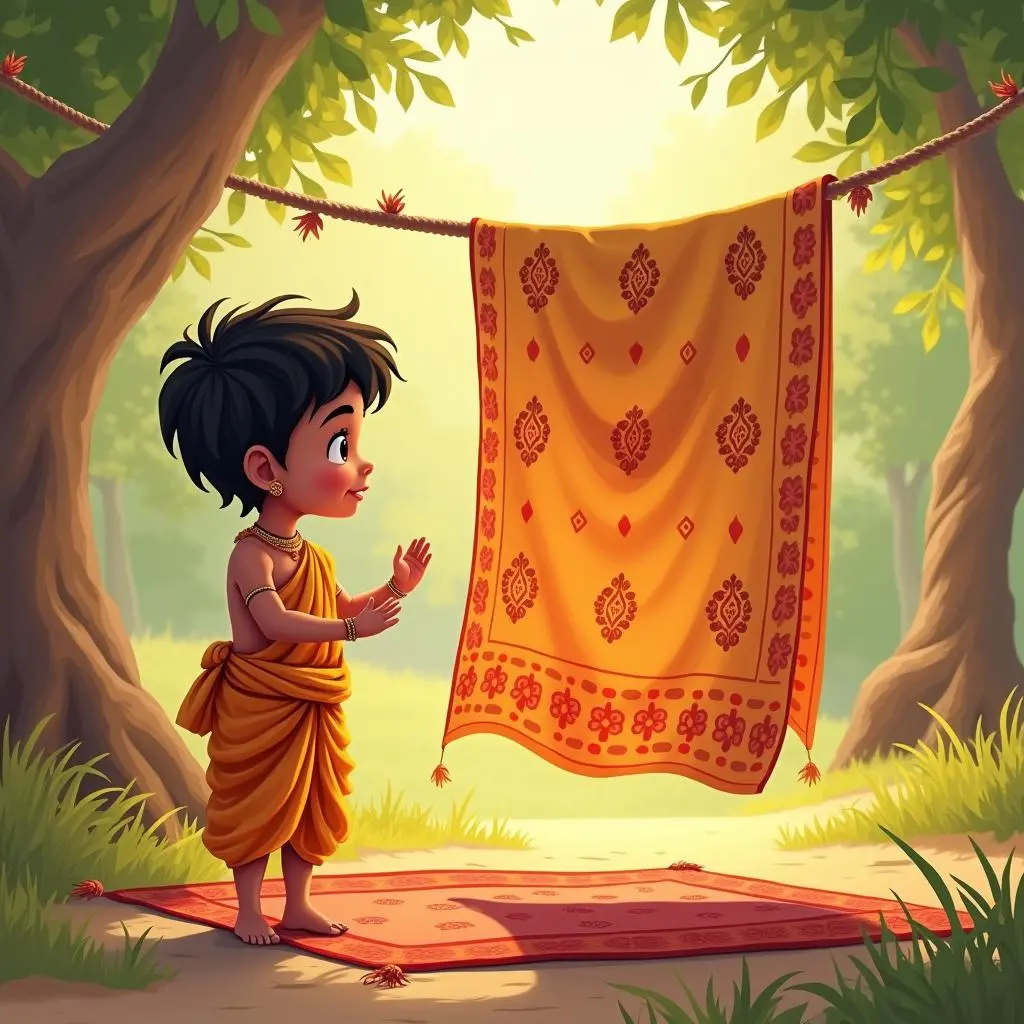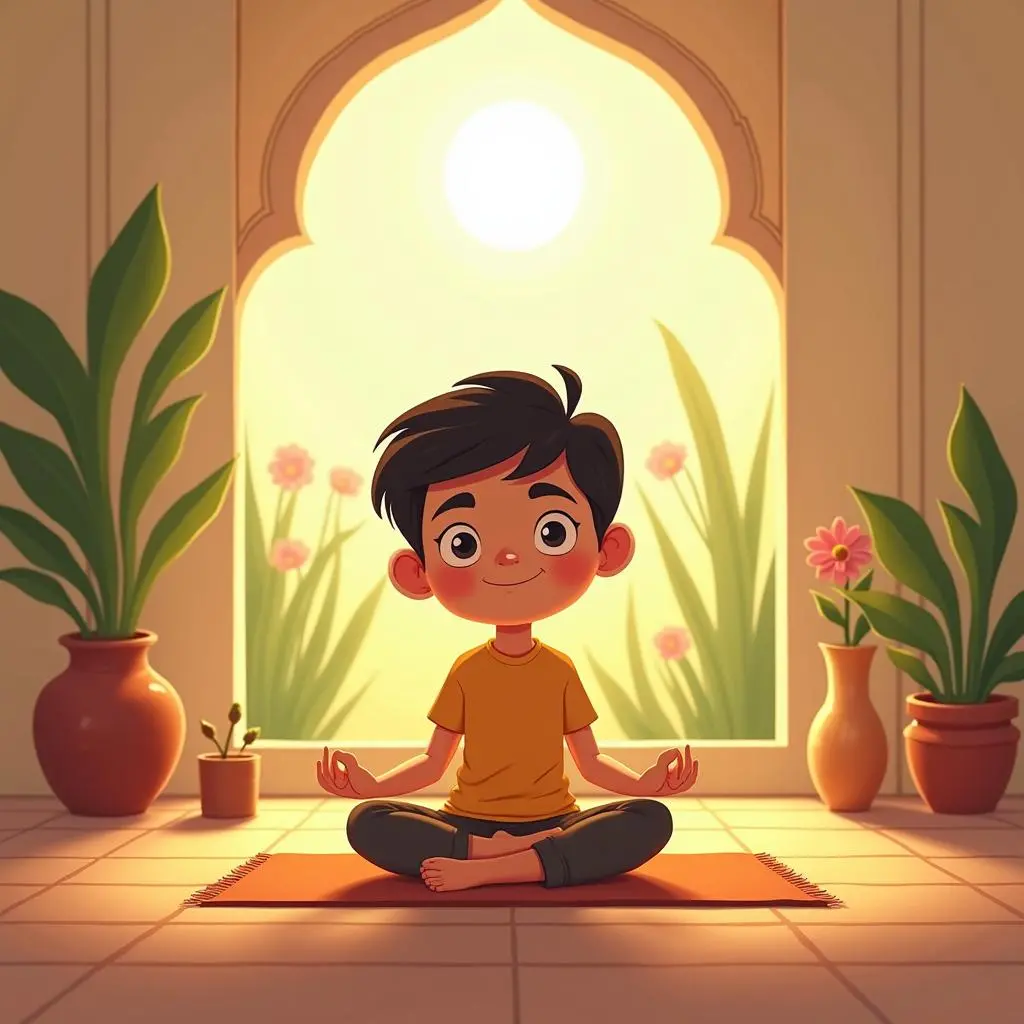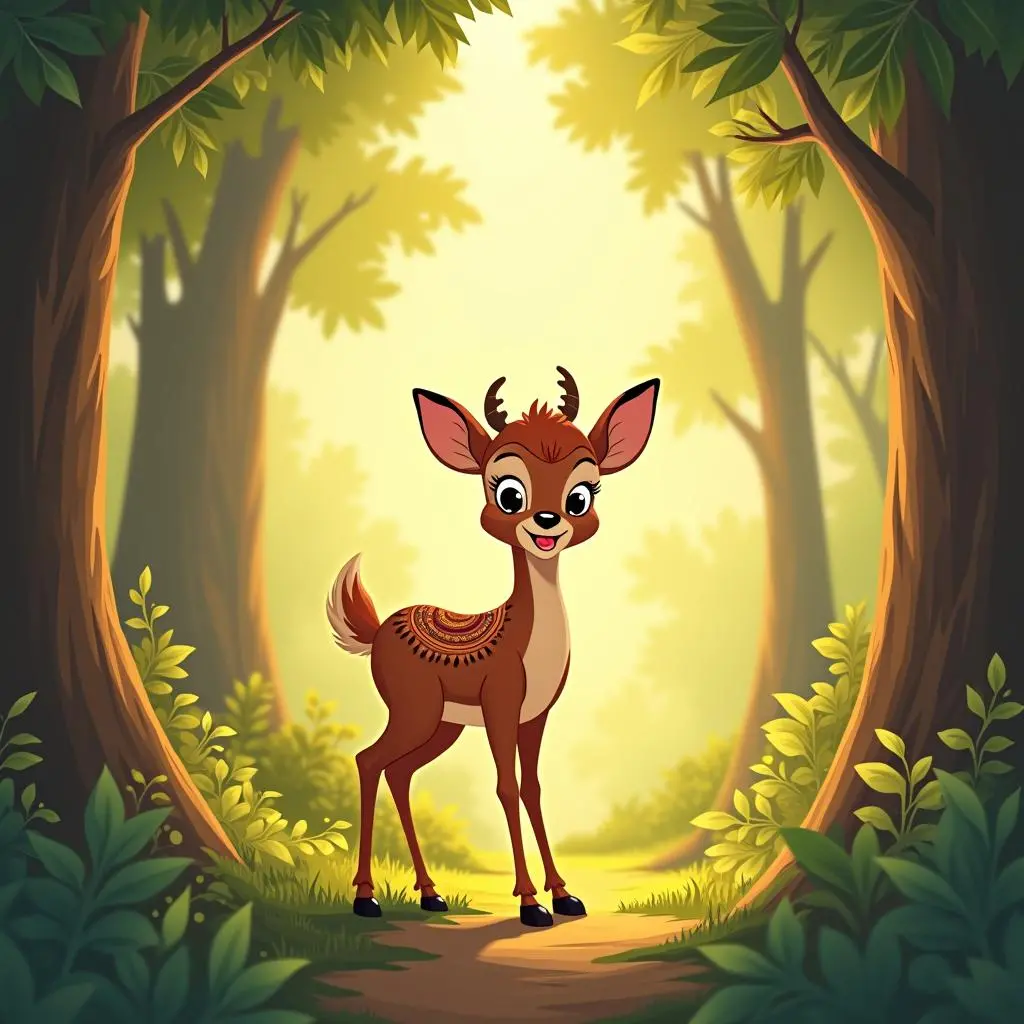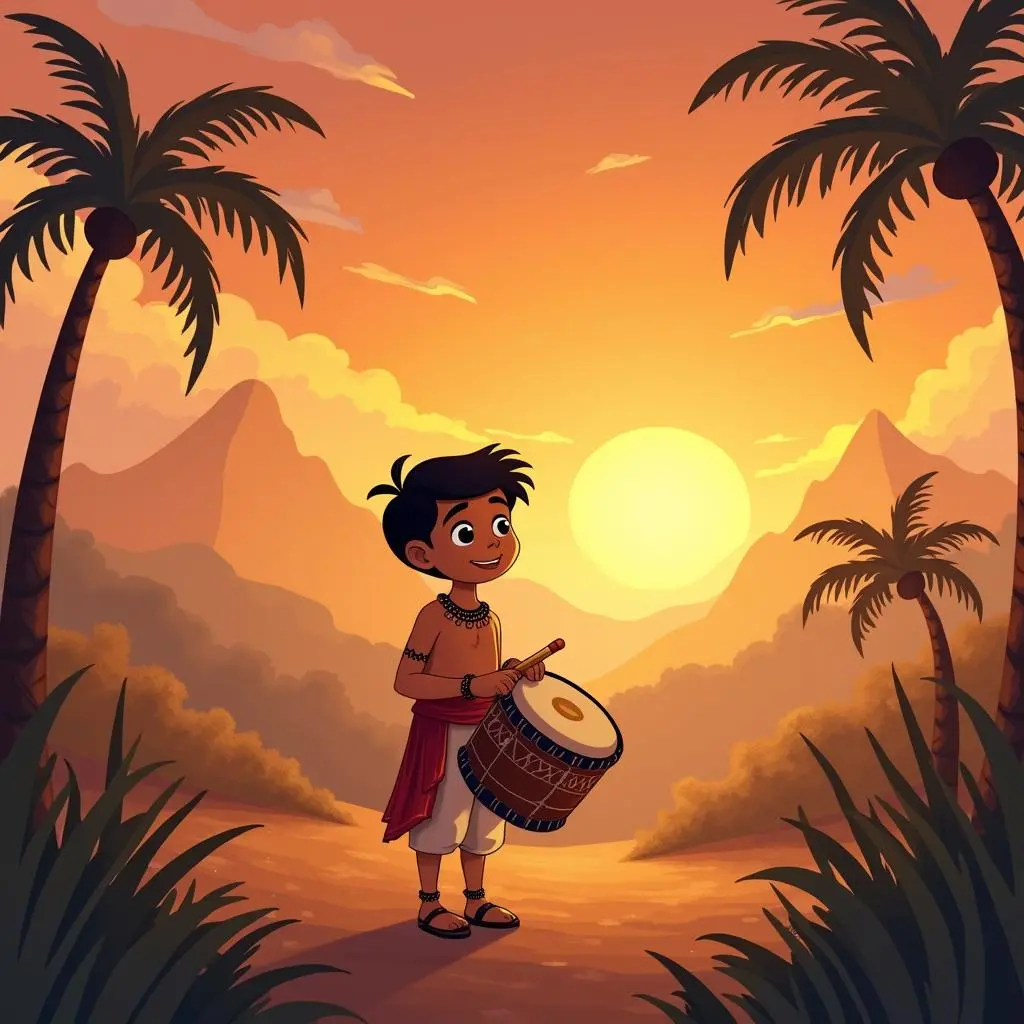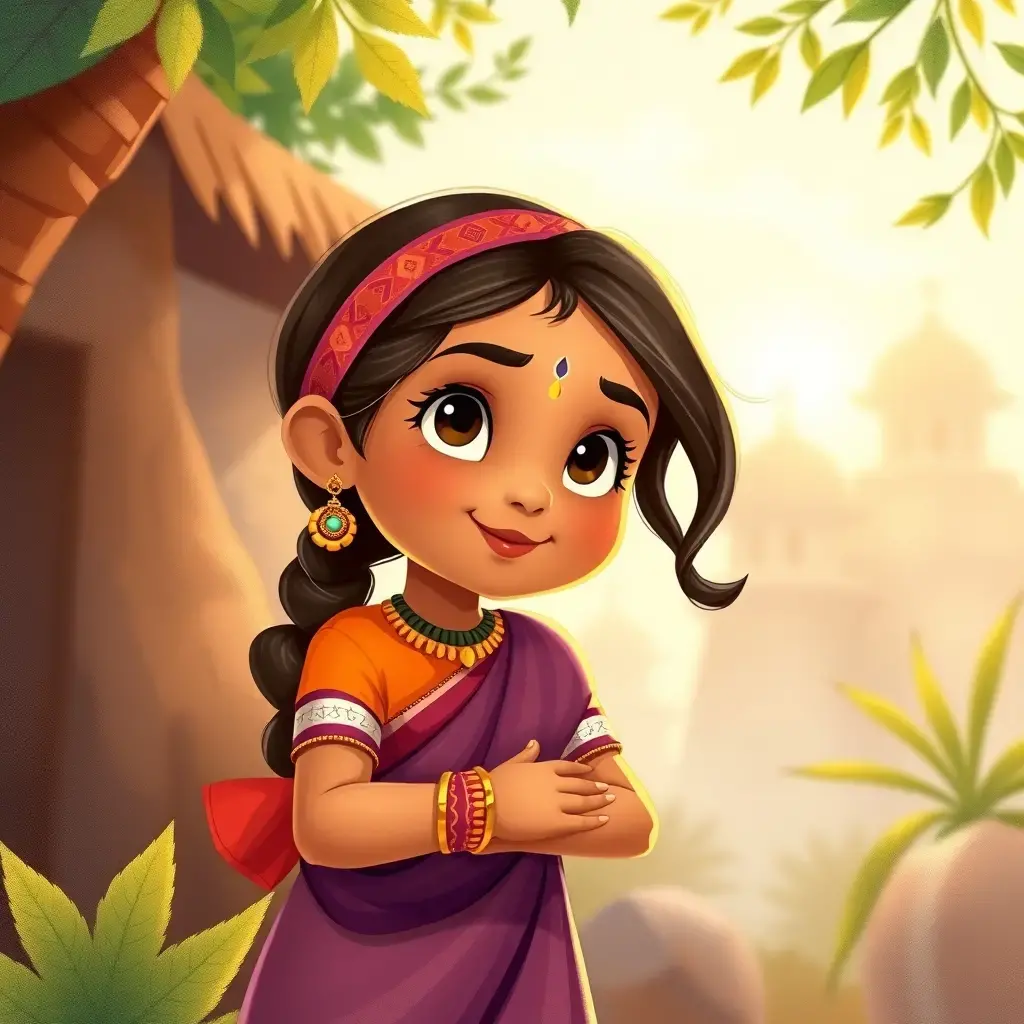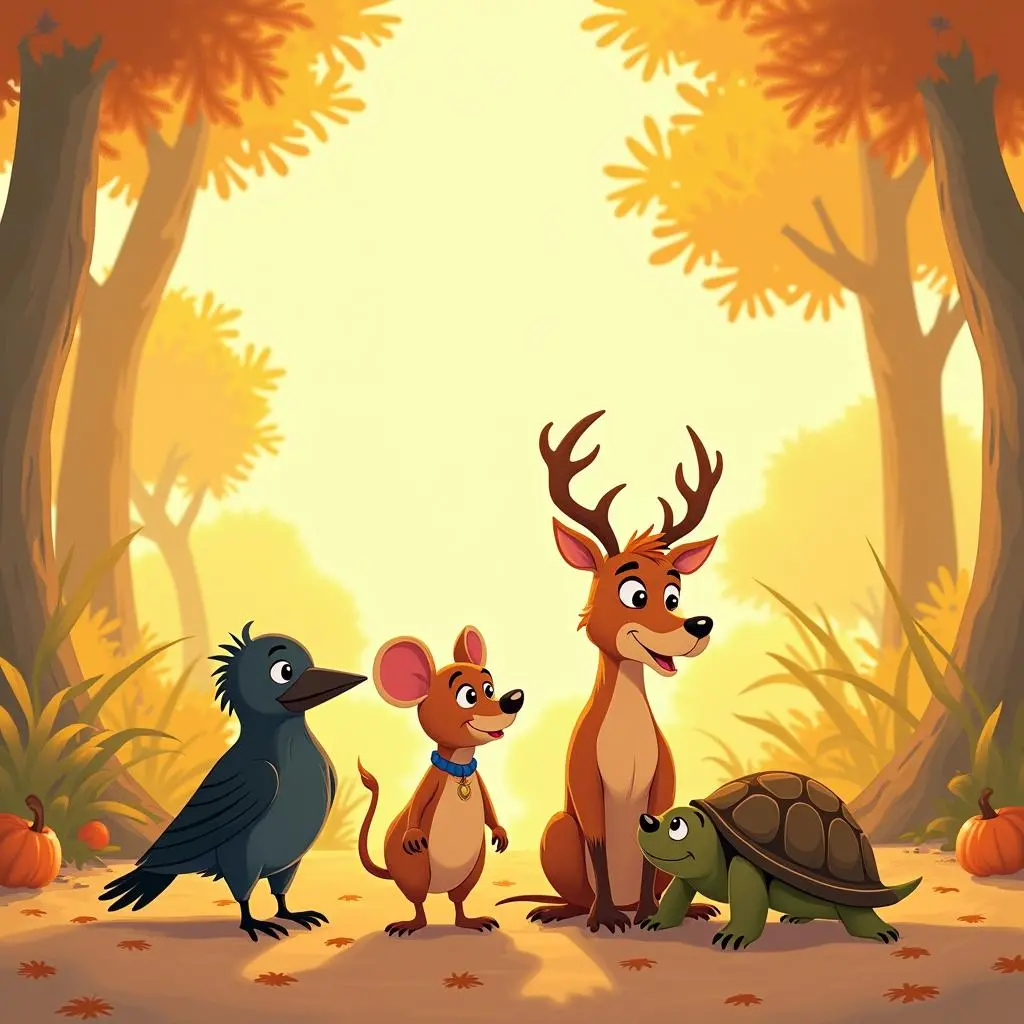In a small village in India, there lived a little boy named Raj. Raj was very kind and full of curiosity. He was always interested in the things around him. One day, he noticed a strange old man at the village fair. On the old man's stall were seven pieces of cloth in different colors: red, orange, yellow, green, blue, indigo, and violet.

Raj was attracted by these cloths. He walked to the stall curiously, with excitement shining in his eyes. He couldn't help reaching out to touch these cloths and felt that some of them were soft while others were a little rough. Seeing Raj's curious look, the old man smiled and said to him, "These cloths all have wonderful stories." Raj's eyes widened and he asked the old man to tell him the stories of these cloths. So the old man began to tell.
The red cloth represents passion and courage. According to the legend, a long, long time ago, there was a brave Indian warrior. He wore a red battle robe and was fearless in the face of powerful enemies. With his passion and courage, he led the villagers to resist foreign invaders and defend their homeland.
The orange cloth symbolizes vitality and happiness. Once upon a time, during an Indian festival, the whole village was decorated with orange ornaments. People wore orange clothes and danced merrily. Children ran around in the streets and alleys, and everywhere was full of vitality and laughter.
The yellow cloth implies wisdom. In the ancient Indian academies, those wise scholars always wore yellow robes. They explored in the ocean of knowledge and passed on wisdom from generation to generation.

Raj was so engrossed in the stories that he seemed to see those scenes. As for the green cloth, it represents vitality and hope. In India, when spring comes, the fields are a mass of green. New life begins to breed, and farmers sow seeds in the green fields, looking forward to the harvest. Green brings people hope for the future.
The blue cloth symbolizes tranquility and peace. In an Indian temple, there is a blue lake. The surrounding environment is very peaceful. Monks meditate and practice here. The blue lake seems to be able to wash away the troubles in people's hearts and make people's hearts calm.
The indigo cloth has a mysterious meaning. In some ancient Indian legends, indigo is the color favored by the gods. It hides a lot of mysterious powers, and only those with pure hearts can feel its magic.
The violet cloth represents nobility and elegance. In the Indian court, the king and queen always wore magnificent violet clothes. They held grand banquets in the palace. The violet decorations made the whole palace look extremely noble.
After the old man finished telling the stories of these cloths, Raj was full of respect for these cloths. He wanted to share the stories of these cloths with the others in the village. The old man saw Raj's thought and gave these seven pieces of cloth to Raj. Raj happily took the cloths and ran back to the village.
Since then, Raj has become a little storyteller in the village. He told the stories of the seven pieces of cloth to everyone who was willing to listen, and these stories have been passed down in the village from generation to generation.
